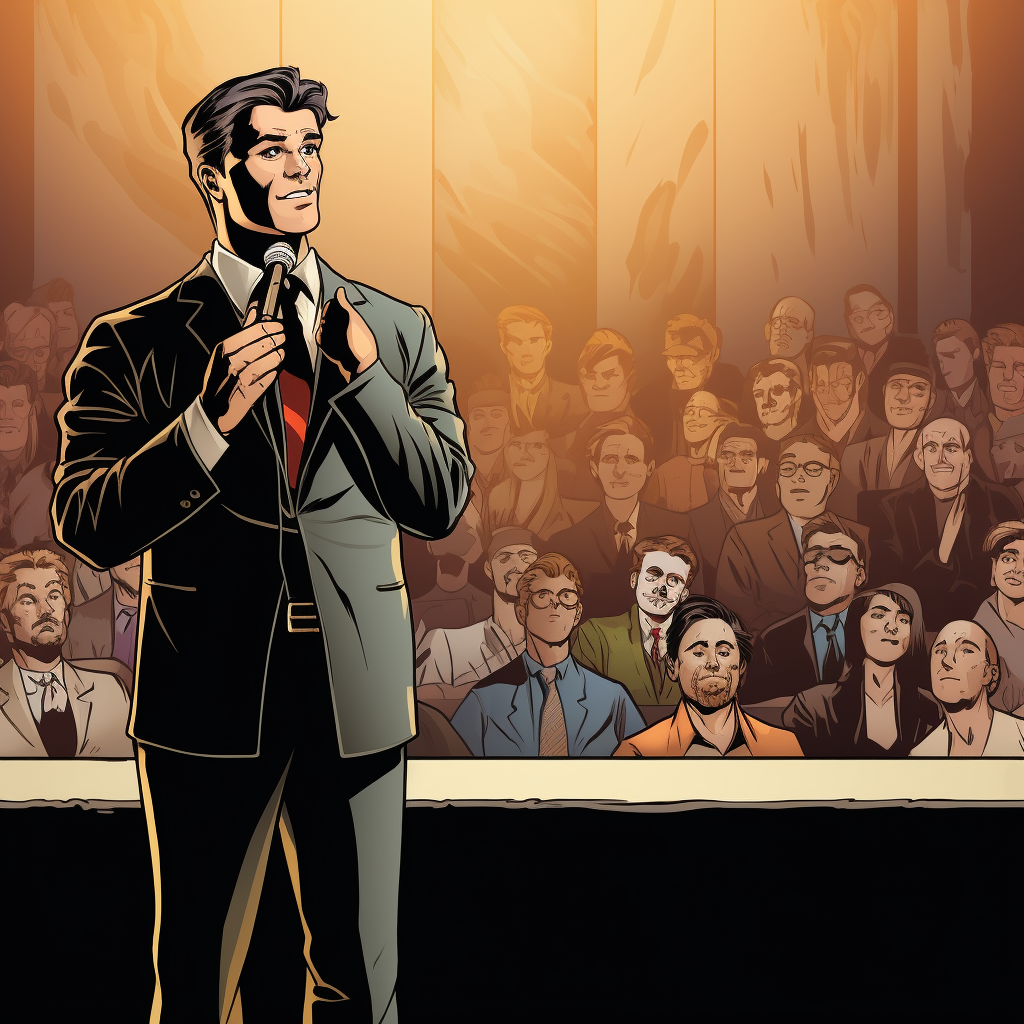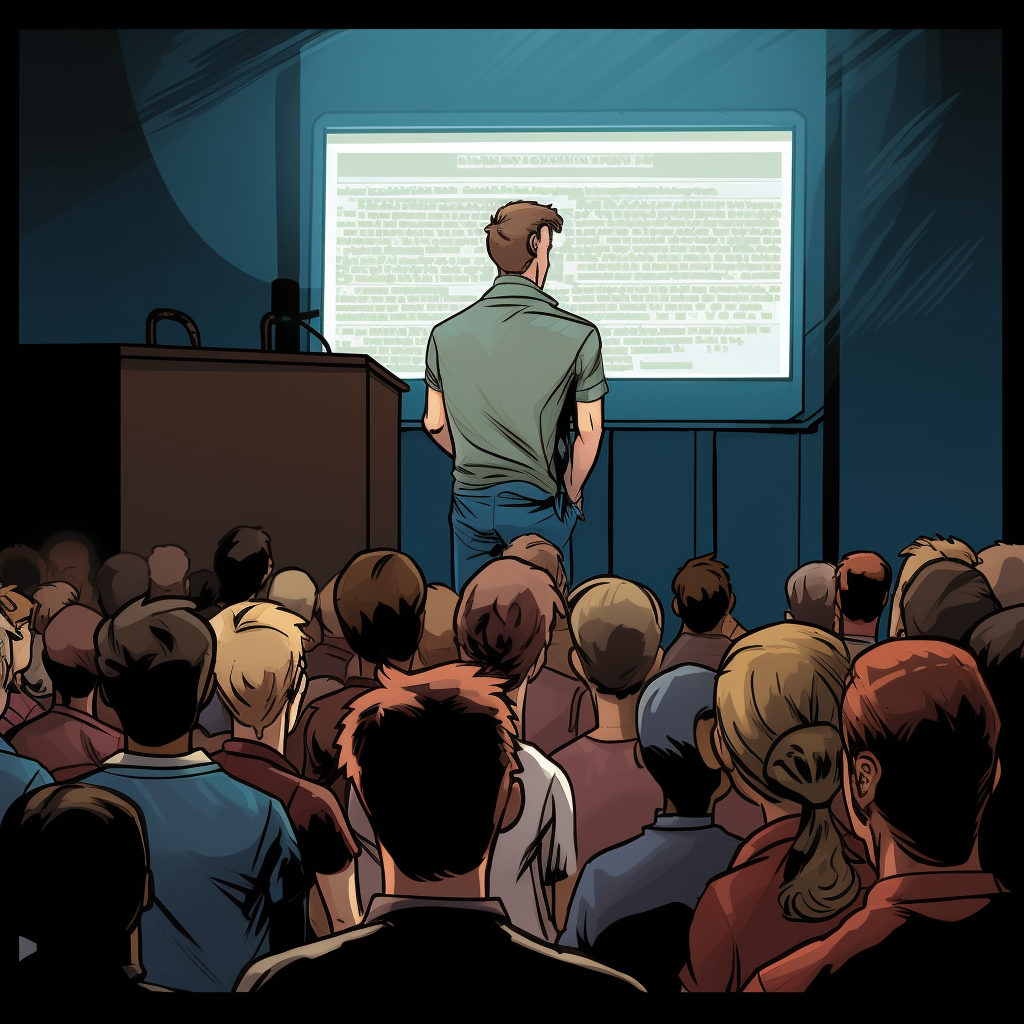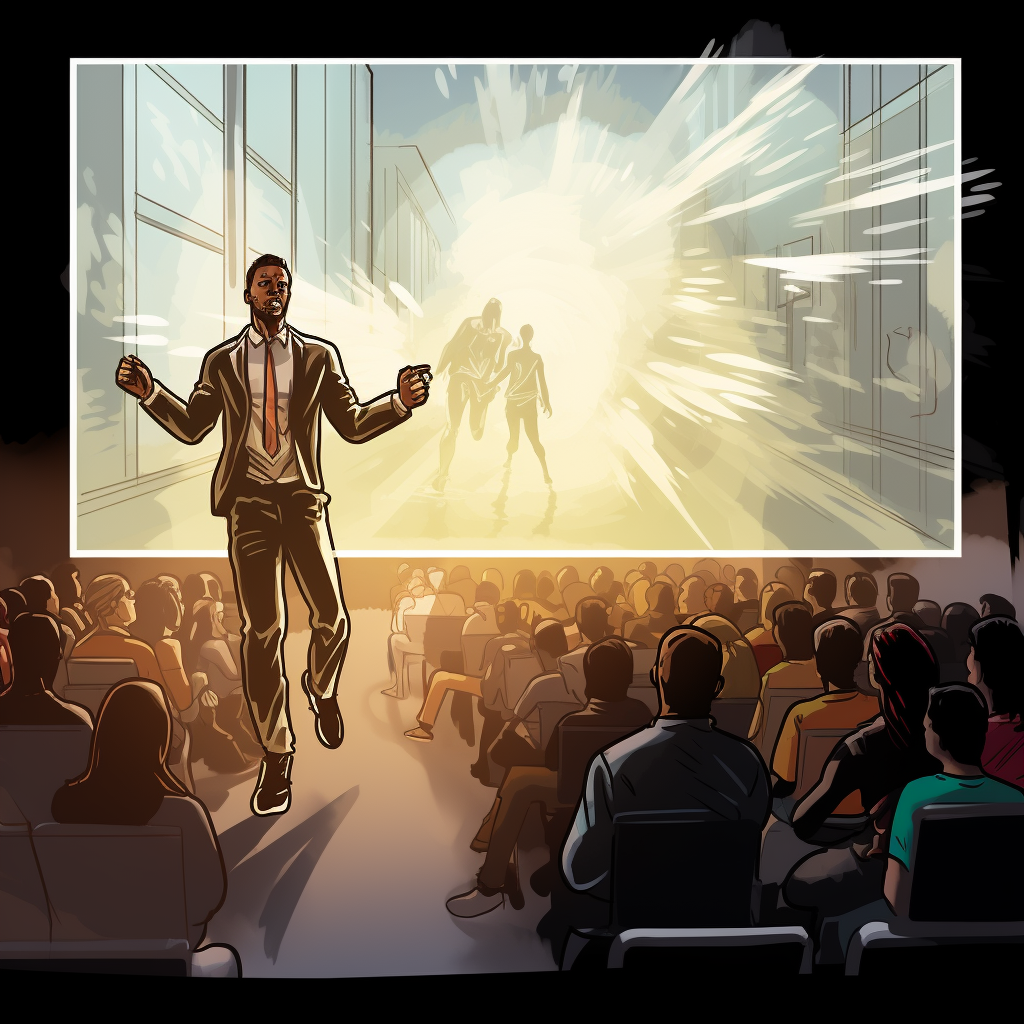In reality, public speaking is an art akin to theatrical play. As part of the audience, you may doze off and wish you could have spent your time better listening to someone present or you may get inspired after an insightful, energetic performance. From the perspective of performance, public speaking for many is a great fear to overcome. Think about it; all those people gathering in front of you ready to judge your every word and move. Naturally, it can be unsettling. There is no shame to admit that you can use all the help you can get if you still find yourself scared of being the center of attention.
I had the fortune to attend numerous public performances and also speak on the stage in front of different audiences. Through practice, the fear slowly diminishes. Rather than listing 7 different mistakes one can do while giving a public speech or a presentation, I thought to make it a little more interesting for you. In this blog post, I will discuss the 7 different poor public speaking personas that I most frequently encountered. You may recognize yourself in one or a blend of them. Until this day, I too still witness some of these flash through me from time to time.
1. The Madman

You know how a crazy person sometimes mutters jibberish to himself with no regard for who surrounds him? If you ever witness a public speaker who seems like he does not even need an audience to perform for, that is our Madman. This is the person who establishes no eye contact with anyone in the audience. He may be looking in different directions but never at his listeners. He does not engage with the people and, therefore, there tends to be no flow of energy between him and the rest. And sometimes, his voice may sound exactly like he is speaking his thoughts out loud.
What makes this ineffective? It is a bit like watching a video rather than seeing a live performance. What is the purpose of being there if you could just have a recording of it? To the audience, there is no feeling of connection to the speaker and his message. People do not feel the energy they could have otherwise felt had there been a conversational presenter who validates the numerous people staring at him. When a message is directed at you, and not just sputtered on the air, its effect is magnified.
2. The Reader

I bet you know this one. This is the speaker that thought it would be a good idea to fill his presentation slides with mass amounts of text. Entering so many words, to the point where two things happen. Number 1: people’s attention is firstly distracted by trying to study the slide. At this point, most are not fully listening to him. Number 2: the purpose of saying anything that is not written out on the slides loses meaning. So, the speaker starts reading out from the slide. Most annoyingly, when you have already swiftly skimmed through half of the slide, he reads slowly from the very start! Your brain fries.
Being a reader does not equate to being a public speaker. Why not just send your presentation to the people in the audience and let them study it at their own will? All that you wanted to say is already there. Why bother giving a speech or presentation? You should be the source of information. You should be giving this information through your speech. Your presentation slides? They are only there to complement your speech and visualize things that you are talking about.
3. The Walker

Walkers are simply nervous. They cannot handle the pressure so they have to expel the nerve buildup by strolling up and down or left and right across the pulpit. People can tell. The sudden need to follow you around with their eyes like a ping pong ball reveals it all. It quickly becomes agitating to your audience too. They never expected to be doing so many neck motions. It is hard enough to focus on your message and understand what you are trying to say.
So, should you just stand in one place? Well, not necessarily. It can be done without walking too, yes. But if you have to move around, I recommend doing it seldom, naturally, and slowly. You may choose to walk to the other end of the pulpit as you are expanding on your message, but it should not break your performance. If done naturally, it can even give life to your performance, for every action you perform is part of the effect of your presentation.
4. The Auctioneer

You must have seen a movie at one point showing a rapid-fire auctioneer in full swing. This would have been a movie about auctions back in the day. The ones with “Going once, going twice, sold!” Those auctioneers made it a habit to speak at an incredible speed. But they were not giving a public performance wherein their message had to be clearly understood by the audience and resonated with them. Therefore, any public speaker who talks faster than you can process the information you are receiving is also not doing an effective job, especially with no breathers. The delivery is not wholesome. And, usually, this is yet another result of anxiety when performing in front of an audience.
Human beings need time to ponder upon a message. Speaking slowly yet confidently is bound to help you score on your delivery. It also shows your charisma. Many times, it is effective to even state your general point and pause for a few seconds. Let it sink in. And if you are concerned you will not have time to finish if you slow down, well there is clearly too much that you squished into your presentation. You need to rethink your content to allow for a more relaxed delivery.
5. The Fiend

Enthusiasm is gold. You cannot buy it though. If you have it and can genuinely demonstrate it, you are bound to win over hearts. But too much of anything is a bad thing. The fiend is the public speaking persona that is just a bit overboard. He takes that beautiful enthusiasm, fires up the presentation, and lets it burn down to ashes. This is the person that chews over one point or idea more than necessary.
At one networking event, I met a super interesting guy. He was full of life, and stories, and generally exceptionally interesting. Needless to say, I was really looking forward to his presentation. And there I was, the timer has started and he kicked off. For the first 10-15 minutes he did not disappoint. His enthusiasm was blazing. Then, when he continued empathizing with a single idea he was excited about, and never switched from one slide for 10 minutes, everyone including me started to get worn out. He ended up going way past the allocated time slot and the impression was killed. The main lesson to deduct here is to learn to control yourself and be aware of timing.
6. The Deadbeat

What is the opposite of enthusiasm? Dull monotony. It is something you imagine a 2-hour university lecture would sound like when given by a 60-year-old professor tired of life. The tone of voice is boring. The face is emotionless. The message loses importance. A dead performance like that is a sure way to bury your presentation and message. The attention of the audience will disperse within minutes and no one will do you the favor of listening.
Why perform in the first place if that is the atmosphere you will set? This is a major issue before any others that needs to be taken care of. The bigger problem with it is that, due to your nature, you may be mistaken for a deadbeat. For example, if you are known to be a quiet, soft person, you may come off sounding boring and powerless. Through practice, it is quite possible to improve. But first, you need to admit you have this problem. Ask for honest feedback from your acquaintances.
7. The Sloth

I discussed how too fast may be a problem in the shoes of the Auctioneer. Can too slow be a problem too? Well, of course. If you are not upbeat, your presentation’s energy will suffer. While a feeling of no rush gives out your confidence, a moment where you take a few minutes to get to your point will make people reconsider their time. Speed is not only about how slow or fast you talk. It is about your ability to navigate through your presentation’s key points without much mumbling.
When an audience sits and listens to a speech or a presentation, they expect to discern several variable valid main ideas. Beating around the bush shows you have little to no organization. A slow delivery will not only bore but kill your chances of developing the trust of your audience. Before you even get to your main message, whatever that may be, the people listening to you streeeeeeetch the basics will give up. To help yourself, keep your mind on the timing. Skip not-so-important monologue moments you cherished so much in your mind.
Remind you of yourself somehow? Do not fear to admit it. The faster you do the sooner you will get to the top of your public speaking game. Even when you are great, some of these personas may still slip through. After all, you are not a machine but a human being. I intend to expand the topic of public speaking soon since it is so dear to me. Keep your eye on my blog to receive tips on public speaking shortly!

Leave a comment